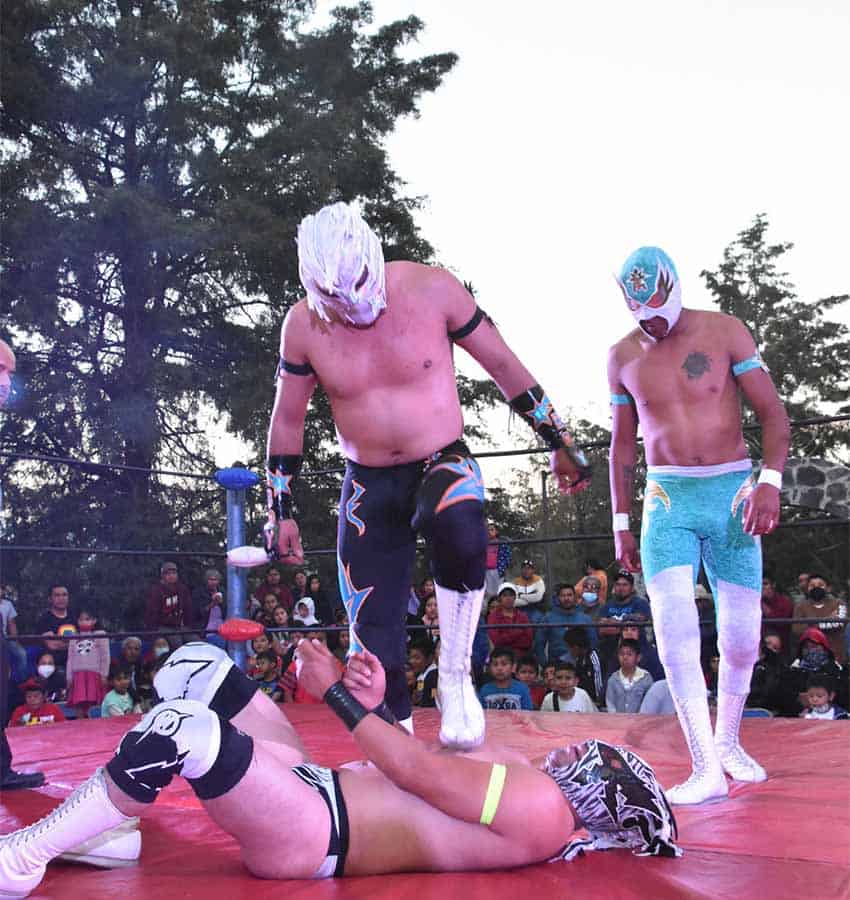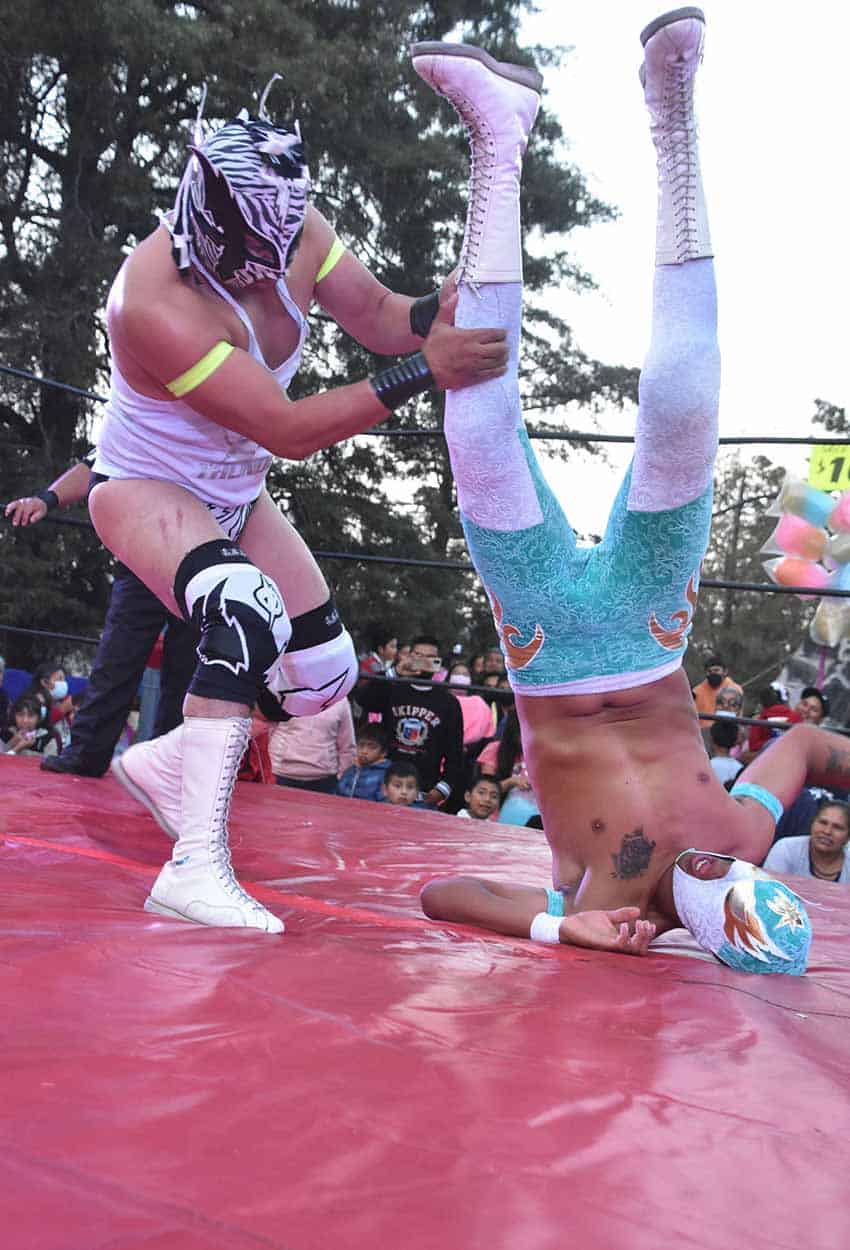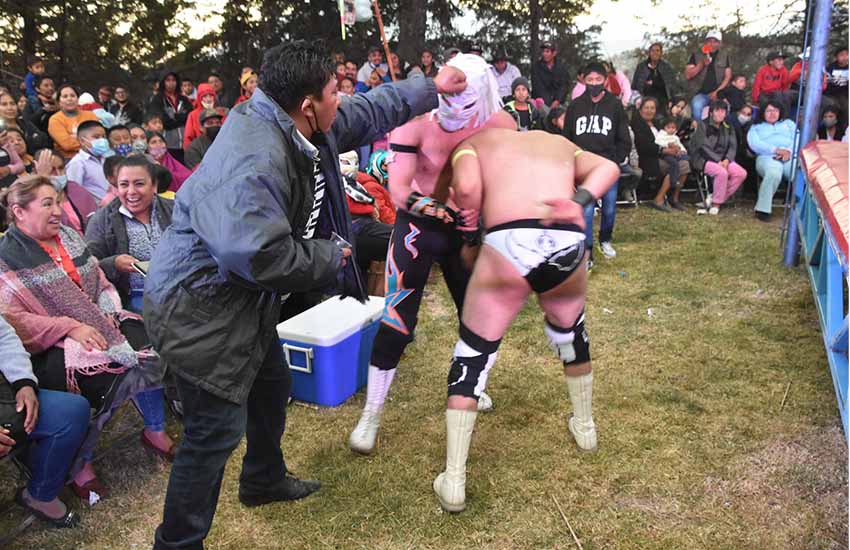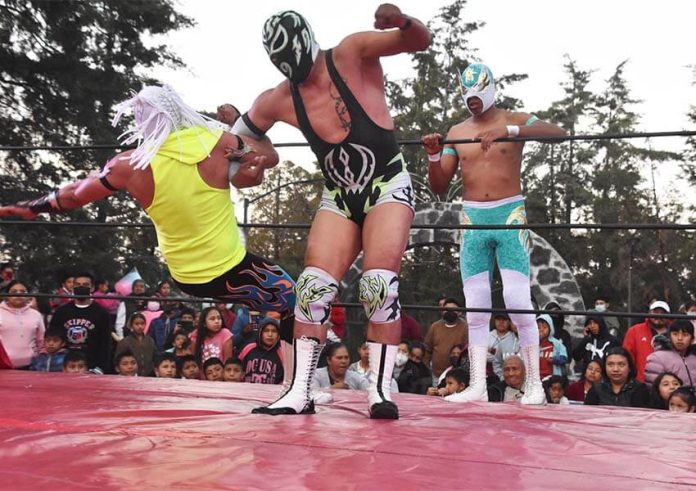As the sun set in the late afternoon, people started filing into the churchyard in San Pedro Yancuitlalpan, Puebla, sitting on folding chairs that had been placed around a small platform. But they weren’t there to attend a Mass. They were there to attend one of Mexico’s more spectacular sporting events: lucha libre.
Lucha libre literally means “free fight” but is typically translated as “freestyle wrestling” and has been around since 1863. Enrique Ugartechea is credited with inventing it in that year, basing it on Greco-Roman wrestling.
Although popular from its very beginning, it was mainly a regional event until 1933 when the Empresa Mexicana de Lucha Libre (The Mexican Lucha Libre Enterprise) was formed and the sport began gaining national attention. Then, in 1942, a luchador (wrestler) known only as El Santo (The Saint) donned what has become the most recognizable symbol of lucha libre: a mask, giving the participants an air of mystery that continues to this day.
In his wake, almost all luchadores now wear masks, and some never appear in public without theirs.
“Lucha libre is about tradition and family,” explained Rob Sheen, the event’s announcer. “It is an amazing show.” Sheen has worked as an announcer for eight years. “I am the third generation in my family dedicated to lucha libre,” he continued.
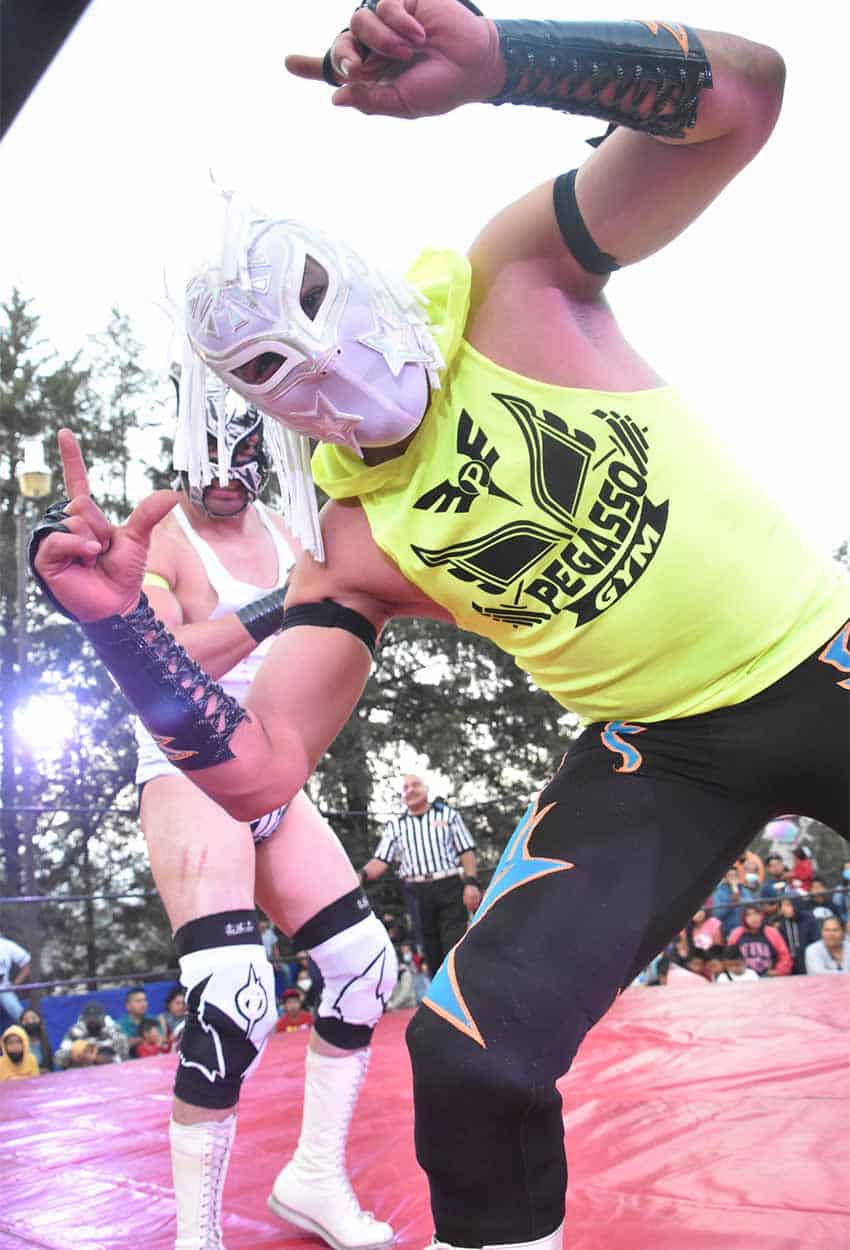
His father and grandfather were both luchadores. “I like it first for tradition, second for conviction and third for its passion,” he said. “It is a contact sport — totally.”
Although passionate about the sport, he’s never been a luchador. “I am dedicated to announcing,” he said. “It is safer.”
But his 14-year-old daughter, Estefanía Nobali Meléndez Rojos, who was sitting nearby, plans on following in her grandfather’s footsteps.
“I love lucha libre,” she said. “My grandfather taught me the moves.” She said she’ll start training when she’s 15.
Her grandfather also influenced Sheen’s older daughter, who has been training for seven years to become a luchadora. When Meléndez was told that this seemed like a long time, she replied, “You never stop training when you are in the life of the lucha.”
Shortly before the match began, eight luchadores arrived with small bags and backpacks, changing into their costumes and masks inside a small trailer. Then, as Sheen announced the beginning of the first match, four luchadores filed out.
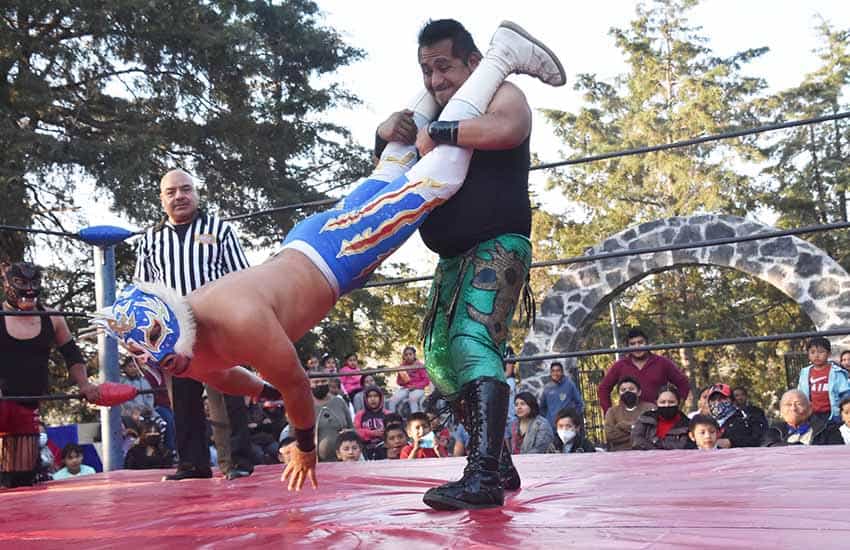
The matches featured teams with two luchadores each, one team serving as the técnicos, the other as the rudos. The individual fighters or teams of fighters generally play one of the two roles: the técnicos are the good guys, the rudos, the bad guys.
A match is won when a luchador is pinned to the mat and the referee counts to three or when a competitor is knocked out of the ring for a count of 20, although the referee’s counting speed varied considerably at this event. Until the very end of a match, the luchador always got back into the fight just before the count ended.
As Sheen said, lucha libre is a contact sport — totally.
There are moves with names like plancha (where a luchador jumps from the top rope onto an opponent who’s lying on his back), the centón (a plancha variant in which the luchador lands on his back atop his opponent) and the helicóptero (which involves, as its name suggests, spinning an opponent).
Although the piledriver, where a luchador is slammed head-first onto the ground, is supposed to be illegal because of the risk of serious injury, it’s still used in matches and was used in this event.
Whatever the move, almost all of them ended with a luchador landing — forcefully — on the thin mats that covered wooden slats, something that had to hurt. There were also punches and kicks and heads being slammed into poles or stepped on. But, in fact, virtually all of those attacks were fake.
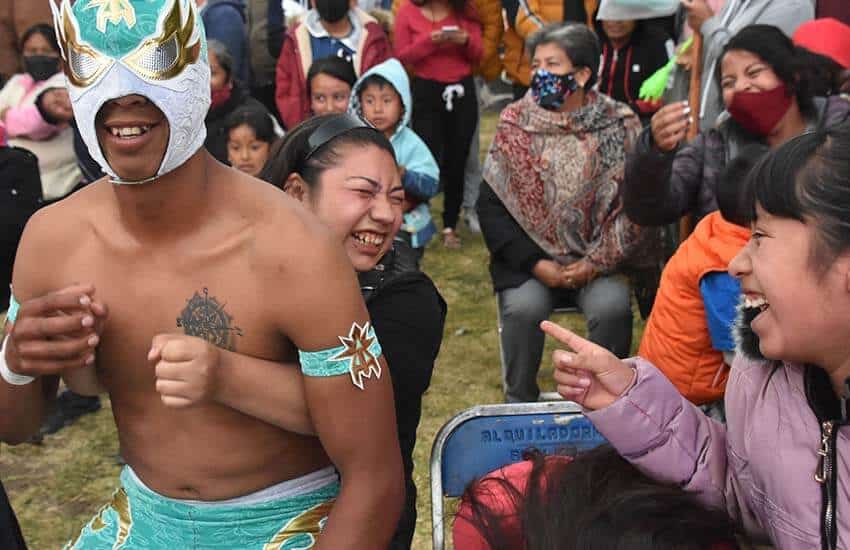
No one in the audience seemed to mind.
The crowd, which was somewhat sparse and quiet at first, grew in size and rowdiness as the matches wore on. There were derisive shouts of “¡Cuidado! ¡Cuidado!” (be careful!) when someone was tossed out of the ring; ¡Otra! ¡Otra!” they shouted when an opponent was hit.
There was also lots of (mostly) good-natured trash-talking between luchadores and spectators.
But, as the bottles of tequila being passed around the crowd emptied, the taunting grew in volume. One seriously inebriated man ill-advisedly grabbed a luchador for a moment or two. Fortunately, the luchador reacted calmly — at first.
When the man continued to yell and curse, though, the luchador crooked his finger and said, “Ven” (come).
The challenger wisely beat a hasty retreat.
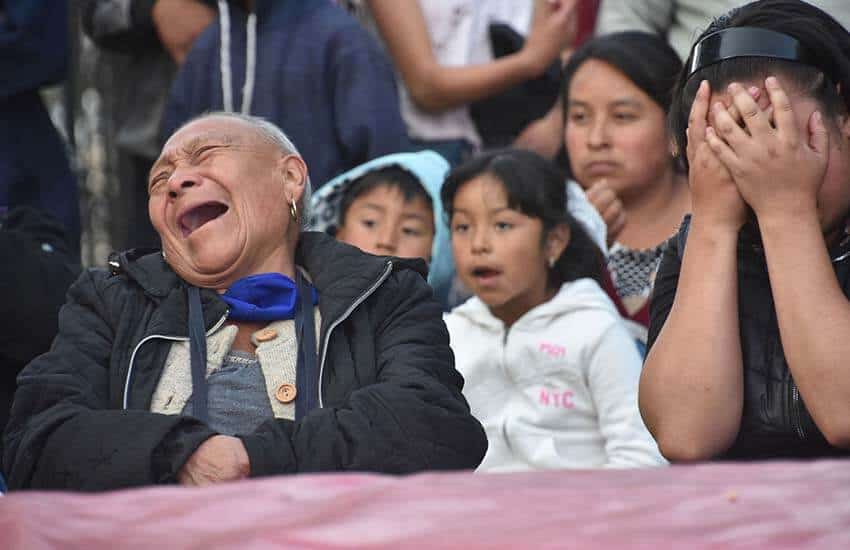
Luchadores are incredibly dedicated to their sport. Tiger Boy, a member of Fabuloso Técnicos, who has been a luchador for seven years, trained for 10 years before his first match.
“It is a passion for me. It is to be with people,” he said. “I train every day for two to three hours. It is very hard, but I like it.”
Although Tiger Boy is the first member of his family to participate in lucha libre, Cometa Boy Junior, another member of the Fabuloso Técnicos, is one of five family members who are luchadores. “It is the ultimate thing I wanted to be,” he said.
People clearly enjoyed the match and, along with the trash talk, there was lots of laughter. Should you go to a match, don’t sit in the front row. Luchadores tossed out of the ring sometimes land on people sitting there. Other times, they’ll just walk over and sit on an available lap.
Because of the pandemic, precautions have been taken at lucha libre events. “Some luchadores have masks that have been fitted with cubrebocas (medical masks),” Sheen said. “They all use sanitizing gel and all have to be vaccinated. It is a rule.”
The sport is extremely popular in Mexico, and some of the kids at this event said they dreamed of being a luchador. But not everyone thought that was such a great idea.
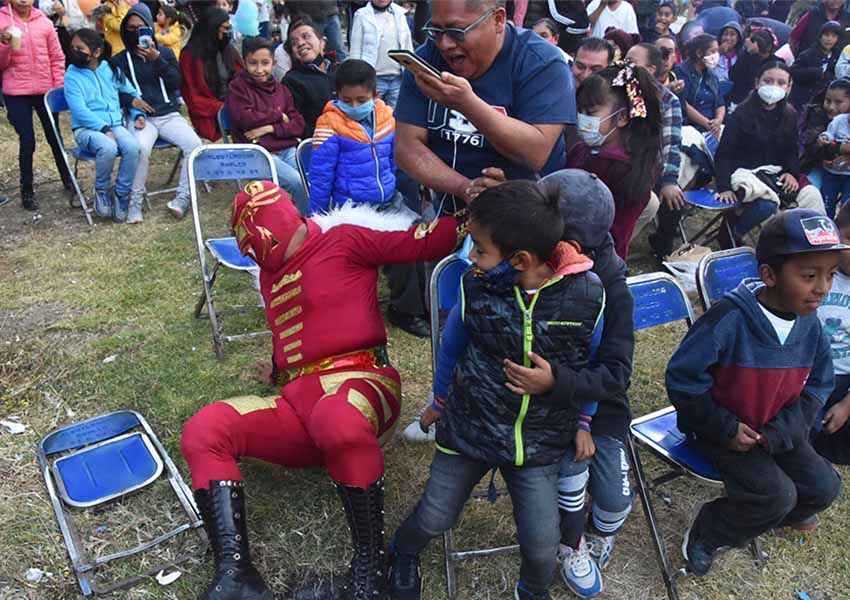
“It is fun to see how they hit,” admitted Marlen Popoca Fernández, “but I do not want to be a luchadora because there are many punches, and some of them are real. I do not want to be punched.”
Joseph Sorrentino, a writer, photographer and author of the book San Gregorio Atlapulco: Cosmvisiones and of Stinky Island Tales: Some Stories from an Italian-American Childhood, is a regular contributor to Mexico News Daily. More examples of his photographs and links to other articles may be found at www.sorrentinophotography.com He currently lives in Chipilo, Puebla.

